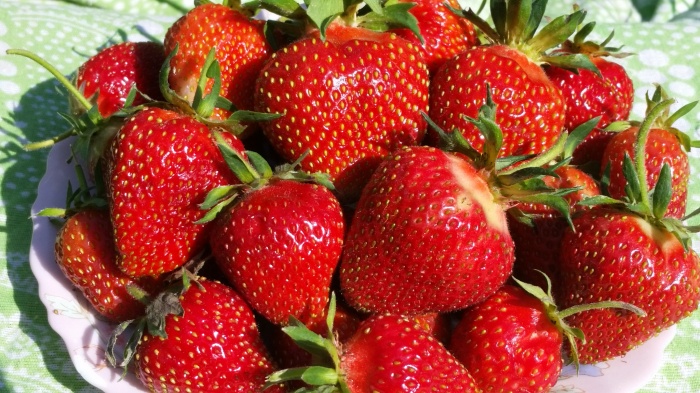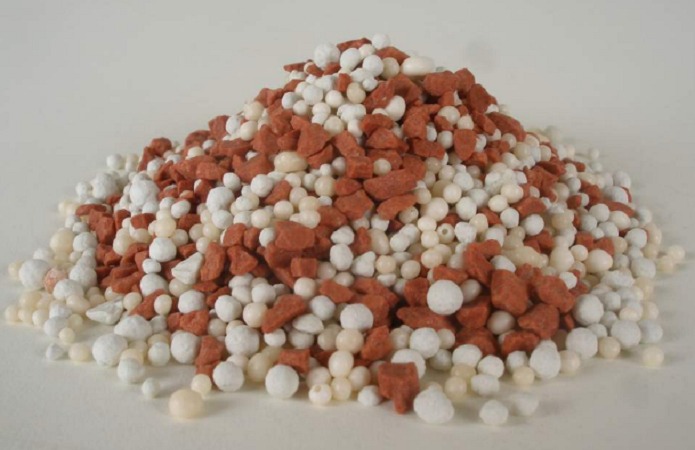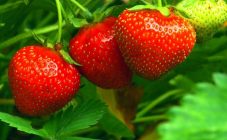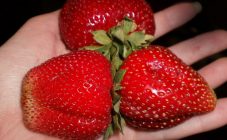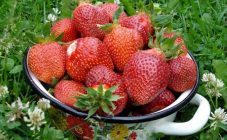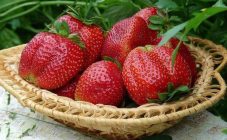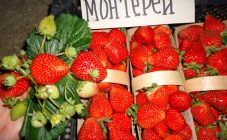Content:
Not all varieties of this berry are liked by gardeners. Popularity is gained by such varieties that combine an attractive taste, pleasant and unique aroma, high nutritional and beneficial properties, ease of care, resistance to diseases and difficult weather conditions. Almost all of them are possessed by the Tsaritsa strawberry, which allows it to be one of the most favorite berries of gardeners and spread throughout the country of Russia.
History of appearance
The described berry is also called garden strawberry. It came about through the crossing of two strawberry varieties: Red Gontlent (bred in Scotland) and Venta (a product of Lithuanian breeders). Distinctive characteristics of these types of strawberries are resistance to spot disease and attack by such pests as strawberry mites. In addition, the varieties easily endure winter, have large fruits that are rich in various chemical elements necessary for humans.
The head of the breeding work, as a result of which the Empress strawberry appeared, is Doctor of Sciences S.D. Aytzhanov. She has been conducting this activity since 1982, thanks to her, a fairly large number of species and subspecies of strawberries have appeared in Russia. To get the described variety, scientists had to study more than a hundred others, which belong to 8 types of culture. As a result, the most promising donors were identified (Red Gontlent and Venta: the first is the result of the work of Scottish breeders, and the second is Lithuanian), which led to the appearance of the Tsaritsa strawberry.
Characteristics of the variety
The main feature of the described type of strawberry is its resistance to frost and the ability to easily endure cold winters. This allows it to be grown in almost any region of the Russian Federation. Strawberry Princess easily tolerates frosts down to -40 degrees Celsius, but only if the snow cover is large enough. In areas where snowless winters prevail, it is recommended to cover it with a special material, spruce branches or fallen leaves of other plants. This will allow the berry to overwinter and next year please the owner of the plot with a new good harvest.
The ripening time of the fruits of the described variety is slightly longer than usual (the second half and the end of June for most regions of Russia, or at the end of May - for the south of the country), which can be taken as a separate advantage, since the gardener has the opportunity to get a harvest of delicious fragrant berries at a later date , thereby extending the possibility of eating them. In addition, it becomes possible to add strawberries to other berries when making various preparations in the form of compotes, preserves, jams and so on. No other variety of this berry has such properties (the ability to be part of a garden cocktail or fruit salads).
When describing the Queen's strawberry variety, attention should be paid to its following characteristics:
- large fruit size (30-50 grams), which provides not only the visual attractiveness of the berry, but also the ability to harvest a good harvest;
- approximately the same size of the crop with proper care over a long period of time (about 2.5 kilograms per 1 sq. m);
- original taste and pleasant aroma.
The strawberry bush of this variety has an average size (height - up to 100 mm, depth of roots - about 200 mm), the number of leaves is also average (there are few and many of them, which makes it easy to harvest and not miss the fruits), often the plant is credited with such a characteristic, like half-spreading. The color of the leaves is dim green, they are triangular in shape, end with blunt teeth. The foliage is smooth to the touch, the edge is absent. White flowers grow on the bushes of both sexes, which ensures stable and high-quality pollination without the need to plant additional plants nearby and the presence of plants of both sexes in close proximity to each other. The fruits are distinguished by symmetry and regularity of forms, and the first ripening berries are the largest, as the harvest ripens, their size decreases.
Agricultural technology of cultivation
The first step in obtaining a high-quality harvest is the choice of planting material. The plant propagates with the help of a mustache, but the first seedlings for breeding on the site are recommended to be purchased in a nursery or specialized stores. This will ensure that the seedlings are of the correct variety and are grown under the correct conditions. It is recommended to purchase Tsaritsa strawberries in special containers and pay attention to the closed root system. Thanks to this, the plant will easily endure transportation and quickly take root in a new place.
The main requirements for the site for planting are:
- it should be flat, without significant differences in height;
- it is necessary to ensure the availability of constant sunlight;
- ventilation must also be stable and of high quality;
- it is not recommended to plant tall plants or place any structures near the site;
- Solanaceous crops are bad neighbors for the Queen strawberry.
The optimal type of soil on which the variety gives a good harvest is loamy soil, but always with a fertile layer. If it is insufficient, you can prepare the soil before planting the culture. Drain, add sand and humus.
The Queen's strawberries can be directly planted in spring or autumn, but most gardeners prefer to do this in the spring, as this allows better control of the survival process, feeding if necessary, and so on.
Strawberry Tsarskaya, the description of the variety of which was given above, is very demanding for watering. It should be watered regularly, throughout the entire period: from the beginning of flowering to the moment of fruit ripening. The interval between watering should not be more than 10 days.
This strawberry variety is fed with standard fertilizers (mineral or organic), while it is very important to observe the recommended dosages.
Harvesting is done immediately after dew has subsided. The berries ripen unevenly, so they are harvested at regular intervals.
An important step is preparing the berries for winter. If little snow is expected, it is recommended to cover the bed with special material or a mulch layer of grass or leaves. This will help the plant survive the winter easily.
Advantages and disadvantages
The main advantages of the described variety are:
- high taste of fruits (tasters rate the berry at 4.8 points);
- the ability to use in various types of blanks, as well as to use fresh;
- ease of transportation and long shelf life;
- ease of care;
- resistance to frost, heat, disease and pests;
- stable fruiting for 4-5 years (then it is recommended to replant the bushes).
There are no pronounced shortcomings. However, some gardeners highlight the need for regular watering, preparation for winter (covering with material or a mulch layer), as well as the impossibility of growing on an industrial scale. However, it is difficult to find a more attractive variety for personal consumption, which makes the Queen's strawberries quite popular in their summer cottages and vegetable gardens.
